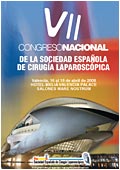INTRODUCTION
In the next 15 years, prostate cancer will most likely become the most frequent cancer in men [1]. Radical prostatectomy is standard treatment for localized prostate cancer in young patients [2]. Despite the excellent oncological results of this therapy, many patients choose alternative treatments due to fear of the invasiveness of radical surgery, the postoperative pain and the potential side effects after surgery (mainly incontinence and impotence). With the development of minimal invasive techniques, the radical prostatectomy may again become a more favorable option. The laparoscopic radical prostatectomy is performed routinely and successfully in different renowned hospitals [3-5]. Despite their promising results, this technique is still not performed routinely by most urologists because of its steep learning curve.
The robot-assisted laparoscopic radical prostatectomy (RoLRP) is the next step in the evolution of minimal invasive techniques in the treatment of prostate cancer. The daVinci surgical system (Intuitive Surgical), with its three dimensional image, endowrist instruments (articulating instruments moving in real-time) and the ergonomic seating of the surgeon in the console, makes it possible to perform complex and lengthy procedures with more ease. This makes a more meticulous dissection possible which might translate in a better functional and oncological outcome for the patient.
The technique of the transperitoneal RoLRP was described and standardized by the Detroit group under supervision of M. Menon [6-7].
In this article, we would like to present our initial oncological and functional results in the first 184 RoLRP performed in our hospital.





